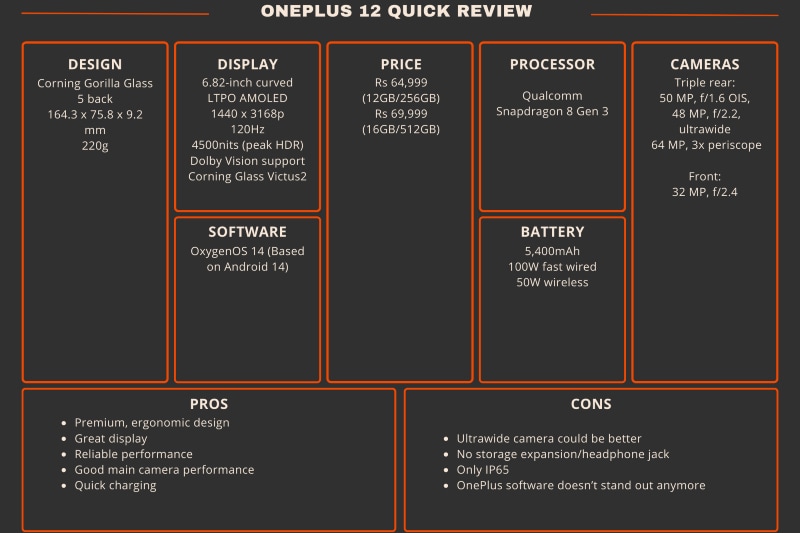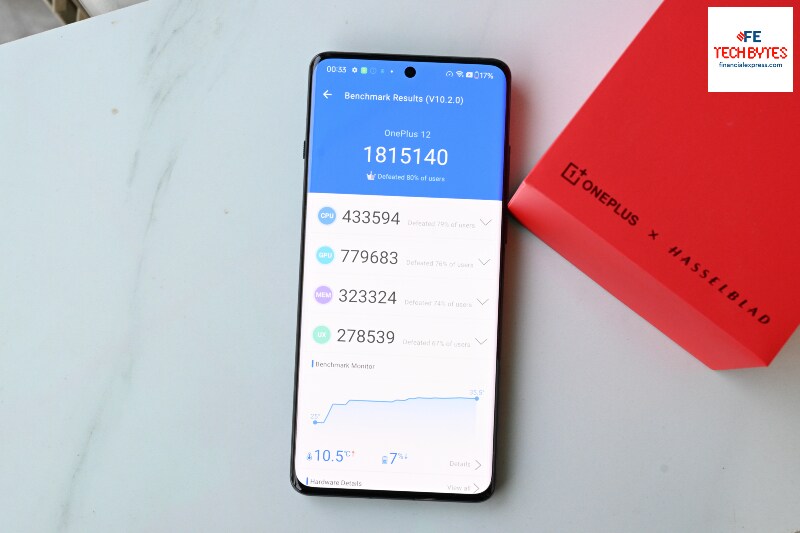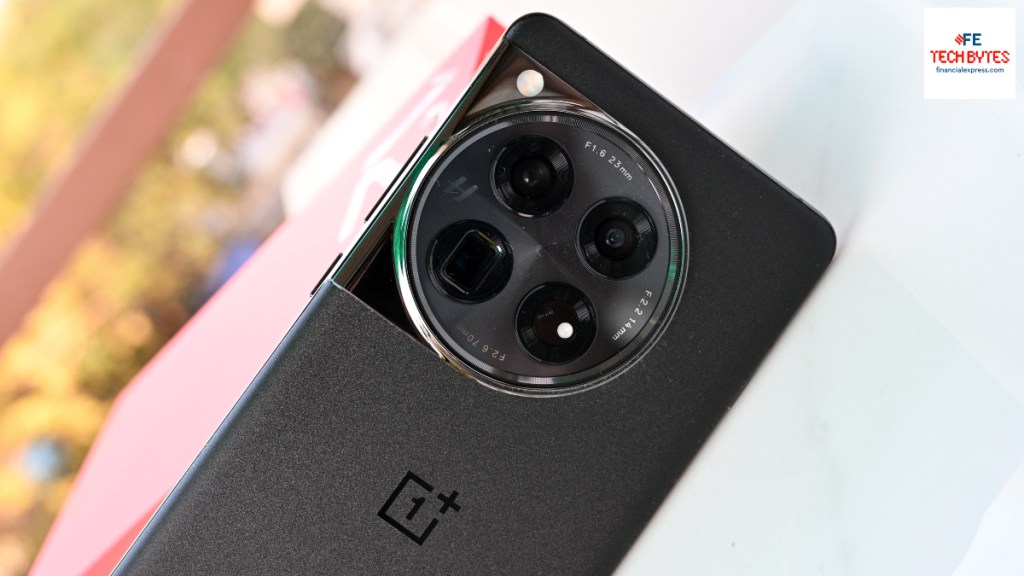OnePlus may have dabbled with myriad naming schemes for its smartphones in its 10-year-long journey, but none’s been more controversial than the T or Pro. These models usually came after a number series phone, often times within the next six months, bringing a faster chip and a few other upgrades, at around similar pricing. Sometimes, the Pro flew solo, too. And sometimes, the T had a Pro version. It was a smart move, making OnePlus harbinger of new and latest technology for customers at that moment in time, even as the company transitioned from being a 1-phone-a-year startup to a behemoth trying to upend Apple and give China’s BBK Group global exposure and recognition.
But it was also a bold move. One that could always backfire, make existing customers angry while triggering FOMO or the fear of missing out among the new. What if the phone I am buying or the phone that I just bought is replaced by something better in the next few months? It’s a very edge case issue, I know, but not impossible. Not if the phone in question is a high-end flagship designed meticulously to compete against a top-of-the-line Samsung or Apple. The latter religiously has one big launch a year. All iPhones, pro, non-pro, mini, launch at the same time. Samsung used to have a two flagship a year policy until recently when it killed off one— the Note— and started putting all its eggs into one basket (except for the foldable which deserves its own independent category and launch as many will agree). Even OnePlus is doing that, now, if you are keeping track. It could be because better sense prevailed, or the more possible explanation, hardware upgrades aren’t coming as fast as they used to. There’s a reason why Samsung has turned the entire conversation to software —and AI— with its Galaxy S24 phones.
And so, if you fall into the trap of comparing the OnePlus 12 with last year’s OnePlus 11, let me tell you straight up, that you will be disappointed. DON’T DO THAT. Compare it to the OnePlus 10 Pro instead and think of it not as the OnePlus 12, but as the OnePlus 11 Pro. I think that is the only problem with this phone. Otherwise, it’s pure gold errr…emerald.
OnePlus 12 review: Design, display
Fun fact: the 11 Pro’s colours build on the 10 Pro’s and so, you get Flowy Emerald for Emerald Forest and Silky Black for Volcanic Black this year. Green is the one to get if you want to stand out. The black— that OnePlus sent me — maybe a timeless classic, but it’s also quite commonplace inside the OnePlus-verse.

The overall design is anything but commonplace. You can always tell a OnePlus flagship phone apart from others, and that’s a big compliment in an industry where everyone wants to be the iPhone. The 10 Pro’s stovetop burner-style camera housing has been retired to make way for a watch dial-inspired assembly that is both posh and striking but even more importantly, its side-way positioning means the phone doesn’t get too top-heavy like say the Vivo X100 Pro. Because let’s face it, this is a big phone. It weighs almost as much as the iPhone 15 Pro Max —220g— and while the iPhone may feel a quarter and a half inch more premium, OnePlus has done well putting everything together at cost. (And it is selling it at almost half the price.) Its inconsistencies with waterproofing continue even in 2024 for some reason. The 11 Pro is IP65 rated, which is better than having nothing (in the 10 Pro), but still not quite there yet from what is widely expected. IP68 should be a dead given at this point and it’s not like OnePlus hasn’t made an IP68 phone before. Likewise, the back panel uses Corning Gorilla Glass 5 (same as the 10 Pro) when some of its biggest competitors have moved three generations ahead. Even the OnePlus 12R has Corning Gorilla Glass 5 and while there it may amount to stupendous value, here it points toward cost cutting.
Luckily, the panel on the front is a huge upgrade. It is still curved, something that I am personally not very fond of (I prefer the iQOO 12’s flat screen over it) but your mileage may vary. The thing about curved smartphone displays is, you either love it, or you don’t. There is no middle ground. For what it’s worth, it has Corning Gorilla Glass Victus 2, and so, you’re getting top-tier protection. The panel itself is high-quality. It is tall (6.82-inch), LTPO AMOLED that can refresh at up to 120 times per second (and go all the way down to 1Hz when need be), has got plenty of pixels (1440p) and can crank up to 1,600nits in sunny outdoors and 4,500nits in HDR (up to Dolby Vision is supported, though my unit failed to put this to test on Netflix). Funnily enough, the S24 phones seem brighter to my eyes (despite their lower peak score on paper).
A couple of areas where OnePlus bounces back —aqua touch and 2,160Hz PWM dimming— are quality of life improvements that you learn to appreciate, the more you use the handset. The fingerprint scanner is also below the screen, it is optical-type, and placed at optimum height so your interactions are more natural. The alert slider is just the opposite. OnePlus has moved it to the left in this generation and I can’t for the life of me, get used to this position. Remember, it’s not a button that you press. It’s a slider. And it should be on the right where it is accessible to my thumb.
OnePlus 12 review: Performance, cameras
Per usual, the 11 Pro gets Qualcomm’s fastest processor on the block, aka the Snapdragon 8 Gen 3. We’re past the days when these chips were “too hot to handle.” There’s greater efficiency in manufacturing and also original equipment manufacturers — like OnePlus— have figured out cooling, and so, a phone like the 11 Pro can be both powerful and power-savvy. Having said that, it is abundantly clear that OnePlus isn’t chasing chart-topping benchmark numbers. Its scores —particularly in AnTuTu— are more conservative compared to say the iQOO 12’s (or even the Vivo X100’s which has the MediaTek equivalent of the Snapdragon), hinting there’s some kind of thermal capping involved (the 10 Pro also came with this caveat). Which is fine as long as it doesn’t interfere with day to day performance. And it doesn’t. There are very few instances where a phone like the iQOO 12 or Vivo X100 might have an edge, but those are few and far between. OnePlus’s “smooth beyond belief” punch line holds up well.

The Hasselblad partnership (now in its fourth year) also holds up unless you have a crazy eye — for detail— for these things. The main camera (50-megapixel main Sony LYT-808 behind an f/1.6 23mm equivalent lens with OIS) especially delivers outstanding results in good light, while in low light, it is more than competent. The ultrawide (48-megapixel Sony IMX581 behind an f/2.2 14mm equivalent) isn’t the sharpest tool but does well enough in ideal scenarios. The telephoto (64-megapixel OmniVision OV64B sensor behind a 70mm 3x periscope) could be better. The setup is exactly the same as the OnePlus Open’s and the results, too, are mostly in familiar territory. Mostly good, but nothing extraordinary. For comparison’s sake, I’ll pick the iQOO 12’s over this. The difference maybe minor but it just goes to show how good a value proposition the iQOO 12 is. But I digress. The 32-megapixel front camera on the 11 Pro is a good enough, though the real kicker is that OnePlus has finally brought 4K video recording to it. It was about time.
Elsewhere, the 11 Pro’s 5,400mAh battery is one for the long road, though you can also kill it off easily by playing games over an extended period. That is not uncommon, most phones tend to do that these days, but it’s something to keep in mind. The great thing is that the phone charges quickly, plugged in (up to 100W) and wirelessly (up to 50W). Wireless requires you to have a very specific charger from OnePlus which we don’t have and so, I can’t give you more details on that. But the bundled wired charger takes about 25 minutes for a full top-up, which frankly speaking, is just brilliant.
A few other areas where the 11 Pro gets a step up are as follows:
- It has an IR (infrared) emitter.
- It has stereo speakers that get nice and loud though I am still not convinced by their bass response.
- It has flagship-grade haptics.
- It has Wi-Fi 7 and Bluetooth 5.4.
- It has a USB 3.2 Gen 1 Type-C port.
OnePlus 12 review: Verdict
If you have come this far only to think that this was some sort of satire on the OnePlus 12 (or OnePlus 11 Pro as I like to call it), it’s not. Far from it. What I have tried to do here, is give you a reality check, or at least how I conceive it with my understanding of covering tech all these many years. I have a bone to pick with those who are tagging OnePlus’s new phone as “basic” because it is not. It is anything but basic. If the consideration is AI, or the lack thereof, yes, OnePlus has a lot of work to do. Maybe it is already working on it. But that’s for another day, another phone, another review. The OnePlus 12 is excellent but it’s also a stark reminder of how companies don’t build new smartphones every year so someone, somewhere will upgrade, every year. There may be some who do, but that is not the status quo. What customers should be happy about is that OnePlus is— and this is the part you should focus on — putting all its energy and resources on building one good, nay great flagship phone a year, that should you buy it, will serve you well. Maybe, it will give it more time to rethink about some of its software choices, who knows.
Follow FE Tech Bytes on Twitter, Instagram, LinkedIn, Facebook.







